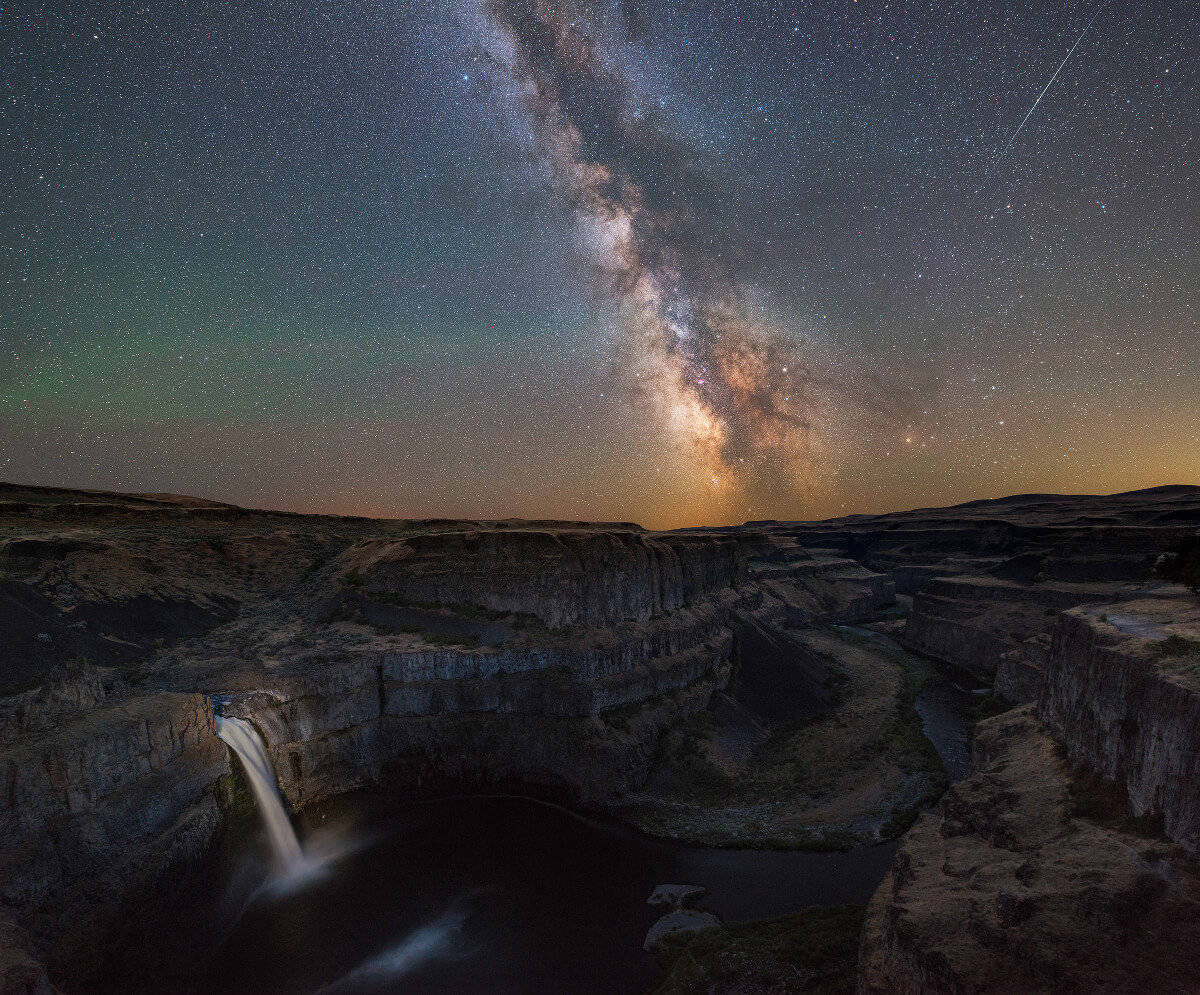In this interview, Michael Ver Sprill (“Milky Way Mike!”) outlines how he took the above photo of the Milky Way over the Palouse Falls in Washington State, USA.
How Did You Plan the Shots?
I was planning a trip to Alaska and had a layover in Washington state for a few days. I decided to google a few locations I could camp at while there.
Palouse Falls popped up and after some more research, I realized a milky way shot was possible from that location.
I checked Stellarium (an app you can use on your phone or computer) to determine the time and direction the Milky Way galaxy would be rising for the month of August in that area.
I lucked out with a clear night and a lot of air glow so I started shooting around 10 pm until about 1 am.
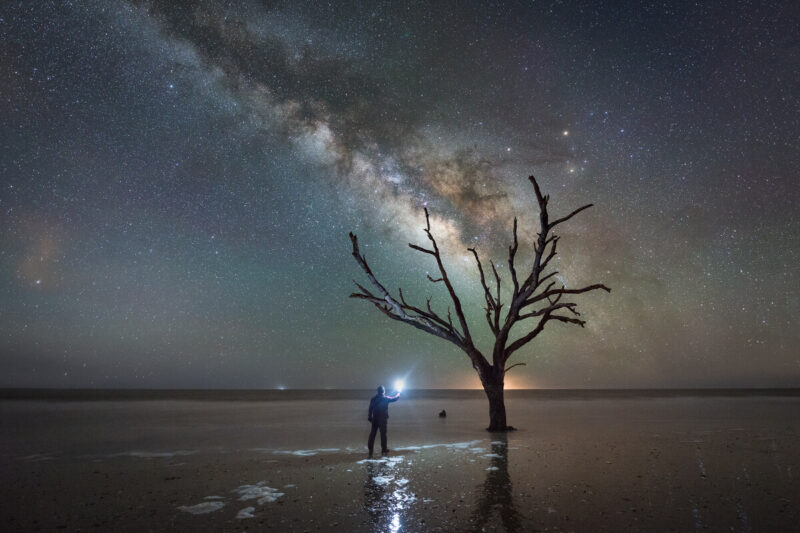
What Equipment Did You Use?
For this shot, I used a Nikon D800 camera with a 14-24mm F/2.8 Nikkor lens.
I mounted my camera to an iOptron star tracker on top of an Oben tripod.
The lighting on the water was done by another photographer using a spotlight.
How Did You Compose the Shot?
Over the years I’ve been trying to perfect different ways to create cleaner night images with less noise. To help me achieve a cleaner image I took two exposures and blended them back together in post.
The first image was of the foreground with my iOptron Tracker turned off. Since the gorge was so dark I took a 6-minute exposure at ISO 1000 with an aperture of F4 while a fellow photographer light painted during that time period.
I then took another shot of the sky with the sky tracker turned on. I changed the settings for the sky to ISO 3200 with an exposure time of 200 seconds at F4.
Both shots were taken at 14mm wide and the reason I kept my lens at F4 was to increase depth of field from corner to corner and to reduce coma aberrations.
Since I was camping within walking distance I set up my camera around sunset to help focus before nightfall.
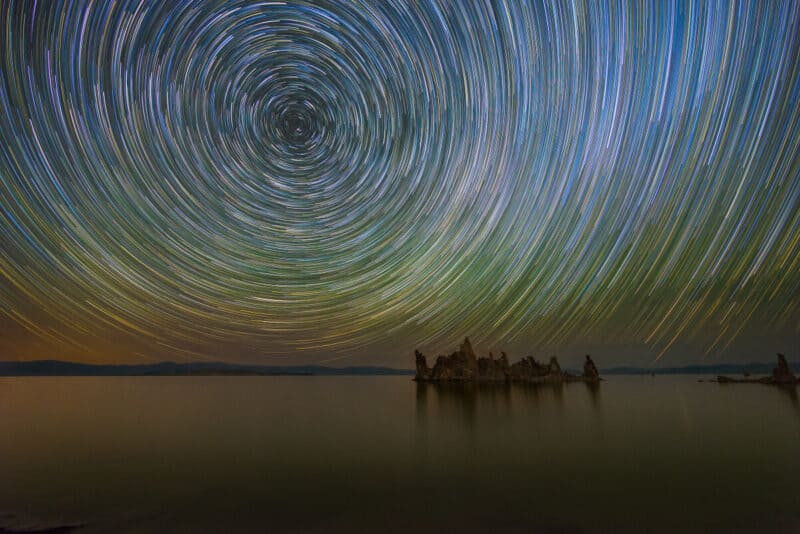
What Post-Processing Did You Do?
When I got back from my trip, I brought my photos into Lightroom.
I did some basic exposure adjustments and white balance corrections before bringing the images over to Photoshop.
For those unfamiliar with a star tracker, it counteracts the Earth’s rotation to allow you to track the stars preventing them from becoming blurry star trails.
The only problem is it will blur the foreground since it is rotating very slowly. So I had to mask out the sky from my foreground exposure and replace it with the Milky Way sky that was being tracked.
Since I didn’t move my camera much while using the iOptron, it was fairly easy to replace the sky. This allows me to have a clean sharp foreground with a clean sharp sky.
I then did some dodging and burning to the foreground and the Milky Way core.
Once that is done I like to bring it back to Lightroom for some more tweaking. I’m pretty much self-taught via YouTube and trial & error with my own experimenting.
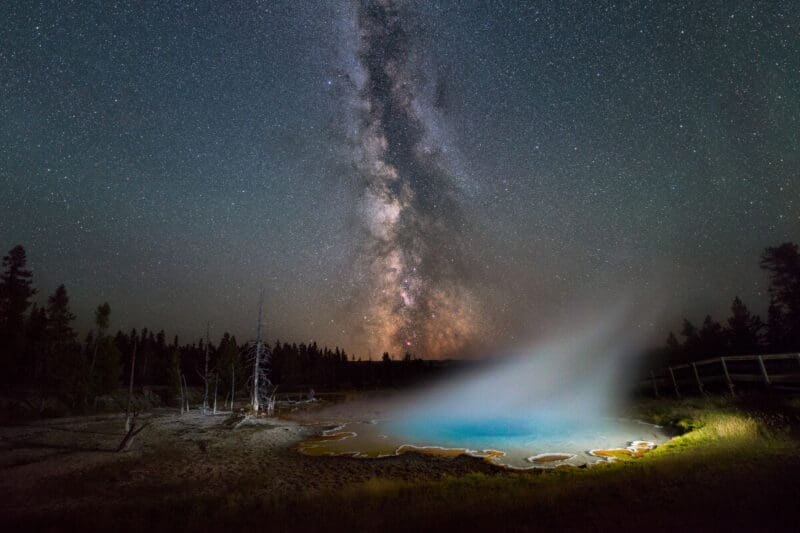
Can You Recommend Any Learning Resources For Other Astrophotographers?
Photography is already expensive, so I always recommend getting free information from YouTube.
Now there are so many night photographers that are willing to share their ideas with video tutorials and blog posts.
So save you money and just google anything you need to learn about night photography!
If you want to get into cleaner night images I also have numerous of videos for free on YouTube.
You can check out one of my videos here:
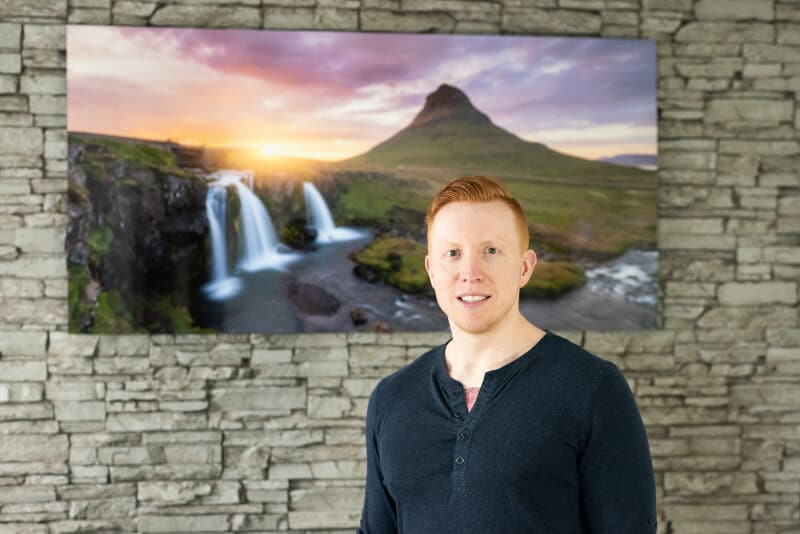
About You – Michael Ver Sprill
I am located in Central New Jersey, one of the worst places in America to photograph the night sky. I’m surrounded by NYC and Philly so I have spent many long hours on the road and sleeping in the back of my car to hunt clear night skies.
Right now I am a part-time photographer, who would love to go full time, however I can’t give up my health benefits at the moment since I have a heart condition.
Photography is great supplemental income, but unfortunately it doesn’t pay all of the bills yet so I have to keep on grinding at my other job as well.
My goal would be to eventually travel for a living taking landscape images both day and night for stock agencies and to sell via my website. I would also like to continue growing my YouTube channel to help others become more passionate about exploring this beautiful world and to become better photographers.
I’m really excited that the community of night photographers is continuing to expand and the quality of work just gets more amazing every year. It’s great that we are starting to reconnect with the stars again like our ancestors before us!
For those that know me and my work, thank you for supporting my Milky Way Mike YouTube channel!
For those that I am new to, please check out my photography here:
- My website
- On Instagram
- My tutorials on YouTube
(This interview was first published on June 9, 2018)


